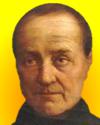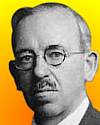
Born 17 Jan 1889; died 28 Jul 1944 at age 55.
Ralph Howard Fowler was an English physicist and astronomer whose university education in mathematics led him to working on thermodynamics and statistical mechanics with important applications in physical chemistry. Turning to astronomy, he collaborated with Arthur Milne on the spectra of stars, and their temperatures, and pressures. He also worked on the statistical mechanics of white dwarf stars (1926) with P.A.M. Dirac, whom he had introduced to quantum theory. Fowler proposed that white dwarf stars consist of a degenerate gas of extremely high density.«
Ralph Howard Fowler was an English physicist and astronomer whose university education in mathematics led him to working on thermodynamics and statistical mechanics with important applications in physical chemistry. Turning to astronomy, he collaborated with Arthur Milne on the spectra of stars, and their temperatures, and pressures. He also worked on the statistical mechanics of white dwarf stars (1926) with P.A.M. Dirac, whom he had introduced to quantum theory. Fowler proposed that white dwarf stars consist of a degenerate gas of extremely high density.«
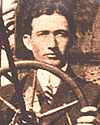
Born 17 Jan 1886; died 4 Dec 1955 at age 69.
Glenn Luther Martin was an American aeronaut and inventor whose bombers and flying boats played important roles in WW II. His first planes were built in collaboration with mechanics from his auto shop, working in a disused church building that Martin rented. In 1909, Martin made his first successful flight; by 1911 he numbered among the most famous of the “pioneer birdmen.” He incorporated the Glenn L. Martin Aircraft Company in 1912 as a manufacturer, and remained for forty years the senior aircraft manufacturer in the U.S. The vast majority of the more than 11,000 planes built by the company before it ceased producing aircraft in 1960, Martin Bombers pioneered the doctrine of airpower in the 1920's to 1930's and served in all theaters in World War II.
Glenn Luther Martin was an American aeronaut and inventor whose bombers and flying boats played important roles in WW II. His first planes were built in collaboration with mechanics from his auto shop, working in a disused church building that Martin rented. In 1909, Martin made his first successful flight; by 1911 he numbered among the most famous of the “pioneer birdmen.” He incorporated the Glenn L. Martin Aircraft Company in 1912 as a manufacturer, and remained for forty years the senior aircraft manufacturer in the U.S. The vast majority of the more than 11,000 planes built by the company before it ceased producing aircraft in 1960, Martin Bombers pioneered the doctrine of airpower in the 1920's to 1930's and served in all theaters in World War II.
To Ride the Wind: A Biography of Glenn L. Martin, by Henry Still. - book suggestion.
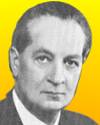
Born 17 Jan 1881; died 24 Oct 1955 at age 74. quotes
Alfred Reginald Radcliffe-Brown was an English social anthropologist of the 20th century, who developed a systematic framework of concepts and generalizations relating to the social structures of relatively simple societies. Radcliffe-Brown did much of his early work among traditional people. His first trip to Australia was in 1910; he joined Grant-Watson and D. Bates on an expedition to study Aboriginal tribes. He believed scientific methods should be applied to the study of a society and its common values, this is also known as “collective consciousness.” He also contributed to the study of kinship. (Kinship is a relationship between persons by blood or marriage.) His functional analysis advanced social anthropology as a science.
Alfred Reginald Radcliffe-Brown was an English social anthropologist of the 20th century, who developed a systematic framework of concepts and generalizations relating to the social structures of relatively simple societies. Radcliffe-Brown did much of his early work among traditional people. His first trip to Australia was in 1910; he joined Grant-Watson and D. Bates on an expedition to study Aboriginal tribes. He believed scientific methods should be applied to the study of a society and its common values, this is also known as “collective consciousness.” He also contributed to the study of kinship. (Kinship is a relationship between persons by blood or marriage.) His functional analysis advanced social anthropology as a science.
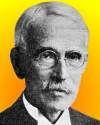
Born 17 Jan 1856; died 31 Jan 1941 at age 85. quotes
American physician and epidemiologist who, with Gardner T. Swarts, established the first municipal bacteriological laboratory in the U.S. (1888) in Providence, Rhode Island. As Superintendent of Health of Providence for 48 years from 1884, he compiled epidemiological data of outstanding accuracy and completeness. He determined from field studies and statistics that infectious diseases were spread in the region's temperate climate by simple personal contact. In 1910, he established Providence City Hospital where infectious disease carriers could be isolated under aseptic nursing conditions. His success pioneered similar health control measures throughout the U.S. He wrote The Sources and Modes of Infection (1910).
American physician and epidemiologist who, with Gardner T. Swarts, established the first municipal bacteriological laboratory in the U.S. (1888) in Providence, Rhode Island. As Superintendent of Health of Providence for 48 years from 1884, he compiled epidemiological data of outstanding accuracy and completeness. He determined from field studies and statistics that infectious diseases were spread in the region's temperate climate by simple personal contact. In 1910, he established Providence City Hospital where infectious disease carriers could be isolated under aseptic nursing conditions. His success pioneered similar health control measures throughout the U.S. He wrote The Sources and Modes of Infection (1910).
Born 17 Jan 1837; died 9 Dec 1883 at age 46.
French Assyriologist and numismatist who recognized, from cuneiform inscriptions, a language now known as Akkadian that proved valuable to the understanding of Mesopotamian civilization 3,000 years before the Christian era. He published his first archaeological paper at 14 and went on to become a scholar of wide achievement.
French Assyriologist and numismatist who recognized, from cuneiform inscriptions, a language now known as Akkadian that proved valuable to the understanding of Mesopotamian civilization 3,000 years before the Christian era. He published his first archaeological paper at 14 and went on to become a scholar of wide achievement.
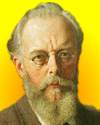
Born 17 Jan 1834; died 5 Nov 1914 at age 80. quotes
August (Friedrich Leopold) Weismann was a German biologist and one of the founders of the science of genetics, who is best known for his opposition to the doctrine of the inheritance of acquired traits and for his "germ plasm" theory, the forerunner of DNA theory. Weismann conceived the idea, arising out of his early observations on the Hydrozoa, that the germ cells of animals contain "something essential for the species, something which must be carefully preserved and passed on from one generation to another." Weismann envisioned the hereditary substances from the two parents become mixed together in the fertilized egg and a form of nuclear division in which each daughter nucleus receives only half the original ancestral germ plasms.
August (Friedrich Leopold) Weismann was a German biologist and one of the founders of the science of genetics, who is best known for his opposition to the doctrine of the inheritance of acquired traits and for his "germ plasm" theory, the forerunner of DNA theory. Weismann conceived the idea, arising out of his early observations on the Hydrozoa, that the germ cells of animals contain "something essential for the species, something which must be carefully preserved and passed on from one generation to another." Weismann envisioned the hereditary substances from the two parents become mixed together in the fertilized egg and a form of nuclear division in which each daughter nucleus receives only half the original ancestral germ plasms.
Born 17 Jan 1824; died 28 Aug 1893 at age 69.
Hayward Augustus Harvey was an American inventor who discovered the modern method of strengthening armour plating.
Hayward Augustus Harvey was an American inventor who discovered the modern method of strengthening armour plating.
Born 17 Jan 1806; died 15 Jun 1888 at age 82.
Scottish mechanical engineer and inventor, whose father was a cousin of William Murdoch, inventor of gas lighting. After apprenticeship, young Muir learned more mechanical skills in a job making cotton spinning machinery. Next he worked for Henry Maudslay where he built a steam carriage (1831). By 1840, Muir joined Joseph Whitworth’s company, where he helped in the design of a standard “Whitworth pitch.” Within a couple of years, he had established his own workshop, and his business thrived and grew. He produced railway ticket printing and dating machines for Thomas Edmonson. Muir provided machinery for the Woolwich Arsenal to make interchangeable rifle sights. He continued inventing machines and machine tools.«
Scottish mechanical engineer and inventor, whose father was a cousin of William Murdoch, inventor of gas lighting. After apprenticeship, young Muir learned more mechanical skills in a job making cotton spinning machinery. Next he worked for Henry Maudslay where he built a steam carriage (1831). By 1840, Muir joined Joseph Whitworth’s company, where he helped in the design of a standard “Whitworth pitch.” Within a couple of years, he had established his own workshop, and his business thrived and grew. He produced railway ticket printing and dating machines for Thomas Edmonson. Muir provided machinery for the Woolwich Arsenal to make interchangeable rifle sights. He continued inventing machines and machine tools.«
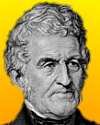
Born 17 Jan 1781; died 15 May 1858 at age 77.
American chemist who devised the first oxy-hydrogen blowpipe for the purpose of producing great heat. He was able to melt sizeable quantities of platinum with this blowpipe. Later, it was discovered that when such a blowpipe flame acted on a block of calcium oxide, a brilliant white light resulted—limelight. His device was also the ancestor of the modern welding torches. He presented a paper describing his invention on 10 Dec 1801 to the Chemical Society of Philadelphia.
American chemist who devised the first oxy-hydrogen blowpipe for the purpose of producing great heat. He was able to melt sizeable quantities of platinum with this blowpipe. Later, it was discovered that when such a blowpipe flame acted on a block of calcium oxide, a brilliant white light resulted—limelight. His device was also the ancestor of the modern welding torches. He presented a paper describing his invention on 10 Dec 1801 to the Chemical Society of Philadelphia.
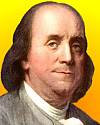
Born 17 Jan 1706; died 17 Apr 1790 at age 84. quotes
American statesman, scientist, inventor, diplomat, author, printer and publisher who become widely known in European scientific circles for his reports of electrical experiments and theories. He invented a type of stove, still being manufactured, to give more warmth than open fireplaces and the lightning rod. He used bifocal eyeglasses also were his ideas. Grasping the fact that by united effort a community may have amenities which only the wealthy few can get for themselves, he helped establish institutions people now take for granted: a fire company (1736), a library (1731), an insurance company (1752), an academy (1751), and a hospital (1751). In some cases these foundations were the first of their kind in North America.
American statesman, scientist, inventor, diplomat, author, printer and publisher who become widely known in European scientific circles for his reports of electrical experiments and theories. He invented a type of stove, still being manufactured, to give more warmth than open fireplaces and the lightning rod. He used bifocal eyeglasses also were his ideas. Grasping the fact that by united effort a community may have amenities which only the wealthy few can get for themselves, he helped establish institutions people now take for granted: a fire company (1736), a library (1731), an insurance company (1752), an academy (1751), and a hospital (1751). In some cases these foundations were the first of their kind in North America.
Benjamin Franklin: An American Life, by Walter Isaacson. - book suggestion.
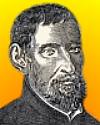
Born 17 Jan 1624; died 6 Mar 1683 at age 59.
Italian architect and theologian whose study of mathematics led him to a career in architecture in which he created the most fantastic geometric elaboration of all baroque churches. In his Santissima Sindone, Guarini created a diaphanous dome - a geometrical optical illusion in the dome made through the use of the actual structure which creates the illusion that the dome recedes farther up into space than it really does. He wrote two architectural treatises and other works that concentrate on his mathematical knowledge. Therein, Guarini discusses Desargue's projective geometry, which reveal a scientific basis for his daring structures. He worked primarily in Turin and Sicily, with his influence stretching into Germany, Austria and Bohemia.«
Italian architect and theologian whose study of mathematics led him to a career in architecture in which he created the most fantastic geometric elaboration of all baroque churches. In his Santissima Sindone, Guarini created a diaphanous dome - a geometrical optical illusion in the dome made through the use of the actual structure which creates the illusion that the dome recedes farther up into space than it really does. He wrote two architectural treatises and other works that concentrate on his mathematical knowledge. Therein, Guarini discusses Desargue's projective geometry, which reveal a scientific basis for his daring structures. He worked primarily in Turin and Sicily, with his influence stretching into Germany, Austria and Bohemia.«
Guarino Guarini and His Architecture, by H. Meek. - book suggestion.

Born 17 Jan 1560; died 5 Dec 1624 at age 64.
Swiss physician, anatomist and botanist who introduced a scientific binomial system of classification to both anatomy and botany. In 1623 Gaspard Bauhin produced the Pinax Theatri Botanici. (Basel, 1623), the first attempt to summarize a confusing array of names. It was a monumental compilation that pulled together uncoordinated plant names and descriptions of 6000 species that had appeared in Theophrastus and Dioscorides, as well as in later herbals and other plant records. By accepting Bauhin's compilation, Linnaeus was able to avoid many of the complications of the ancient literature.
Swiss physician, anatomist and botanist who introduced a scientific binomial system of classification to both anatomy and botany. In 1623 Gaspard Bauhin produced the Pinax Theatri Botanici. (Basel, 1623), the first attempt to summarize a confusing array of names. It was a monumental compilation that pulled together uncoordinated plant names and descriptions of 6000 species that had appeared in Theophrastus and Dioscorides, as well as in later herbals and other plant records. By accepting Bauhin's compilation, Linnaeus was able to avoid many of the complications of the ancient literature.
Born 17 Jan 1501; died 10 May 1566 at age 65.
German botanist who prepared the first important glossary of botanical terms. This made a definite break from Dioscorides, and helped make the transition to modern botany. Although he was at first a private physician, and then professor of medicine, he actively persued an interest in natural history. He wrote books such as History of Plants (1542), in which he described numerous plant species in detail. His name was honored later by the naming of the fuchsia shrub. The distinctive bluish red colour of the flowers is also now known as fuchsia, eternally perpetuating his name.
German botanist who prepared the first important glossary of botanical terms. This made a definite break from Dioscorides, and helped make the transition to modern botany. Although he was at first a private physician, and then professor of medicine, he actively persued an interest in natural history. He wrote books such as History of Plants (1542), in which he described numerous plant species in detail. His name was honored later by the naming of the fuchsia shrub. The distinctive bluish red colour of the flowers is also now known as fuchsia, eternally perpetuating his name.
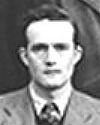
c. 1948
Died 17 Jan 2001 at age 79 (born 11 Aug 1921).
British electrical engineer who wrote the computer program used to test the first stored-program computer, the Small-Scale Experimental Machine, SSEM, also known as "The Baby." First tested on 21 Jun 1948, the program took 52 minutes to run. The tiny experimental computer had no keyboard or printer, but it successfully tested a memory system developed at Manchester University in England. This system, based on a cathode-ray tube, was the first that could store programs, whereas previous electronic computers had to be rewired to execute each new problem.
British electrical engineer who wrote the computer program used to test the first stored-program computer, the Small-Scale Experimental Machine, SSEM, also known as "The Baby." First tested on 21 Jun 1948, the program took 52 minutes to run. The tiny experimental computer had no keyboard or printer, but it successfully tested a memory system developed at Manchester University in England. This system, based on a cathode-ray tube, was the first that could store programs, whereas previous electronic computers had to be rewired to execute each new problem.
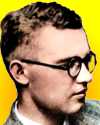
Died 17 Jan 1997 at age 90 (born 4 Feb 1906).
Clyde William Tombaugh was an American astronomer who discovered Pluto, then known as a planet. He was 24 years old, working at Lowell Observatory, Flagstaff, Arizona, when he located it on 13 Mar 1930. He was comparing a photographic plate taken on 23 Jan 1930, with another made a few days later, and saw a star-like speck that changed position between them. Thus ended a decades-long systematic search instigated by the predictions of other astronomers. Tombaugh also discovered several clusters of stars and galaxies, studied the apparent distribution of extragalactic nebulae, and made observations of the surfaces of Mars, Venus, Jupiter, Saturn, and the Moon. Born of poor farmers, his first telescope was made of parts from worn-out farming equipment. Pluto was the only planet discovered in the 20th century, and the only one found by an American.«
Clyde William Tombaugh was an American astronomer who discovered Pluto, then known as a planet. He was 24 years old, working at Lowell Observatory, Flagstaff, Arizona, when he located it on 13 Mar 1930. He was comparing a photographic plate taken on 23 Jan 1930, with another made a few days later, and saw a star-like speck that changed position between them. Thus ended a decades-long systematic search instigated by the predictions of other astronomers. Tombaugh also discovered several clusters of stars and galaxies, studied the apparent distribution of extragalactic nebulae, and made observations of the surfaces of Mars, Venus, Jupiter, Saturn, and the Moon. Born of poor farmers, his first telescope was made of parts from worn-out farming equipment. Pluto was the only planet discovered in the 20th century, and the only one found by an American.«
Out of the Darkness, the Planet Pluto, by Clyde William Tombaugh. - book suggestion.
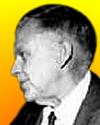
Died 17 Jan 1992 at age 71 (born 27 Sep 1920).
American oceanographer and meteorologist who was an expert on physical oceanography, primarily in the interpretation of data associated with large scale ocean dynamics. He had a long standing interest in the Gulf Stream. He spent most of his career conducting research at the prestigious Oceanographic Institute in Woods Hole, Massachusetts. Considered one of the most influential oceanographers of his time, Stommel proposed many theories that were later proven to be correct by other scientists. He applied electromagnetic measurements to oceanic flows, the dynamics of estuaries and the related problem of hydraulic controls, and the interaction of nonlinear eddy-like phenomena (hetons).
American oceanographer and meteorologist who was an expert on physical oceanography, primarily in the interpretation of data associated with large scale ocean dynamics. He had a long standing interest in the Gulf Stream. He spent most of his career conducting research at the prestigious Oceanographic Institute in Woods Hole, Massachusetts. Considered one of the most influential oceanographers of his time, Stommel proposed many theories that were later proven to be correct by other scientists. He applied electromagnetic measurements to oceanic flows, the dynamics of estuaries and the related problem of hydraulic controls, and the interaction of nonlinear eddy-like phenomena (hetons).
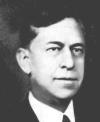
Died 17 Jan 1954 at age 79 (born 22 Jan 1874).
American mathematician who made important contributions to the theory of numbers and the theory of groups. He published 18 books including Linear groups with an exposition of the Galois field theory. The 3-volume History of the Theory of Numbers (1919-23) is another famous work still much consulted today.
American mathematician who made important contributions to the theory of numbers and the theory of groups. He published 18 books including Linear groups with an exposition of the Galois field theory. The 3-volume History of the Theory of Numbers (1919-23) is another famous work still much consulted today.
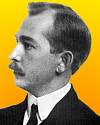
Died 17 Jan 1946 at age 75 (born 5 Apr 1870).
Clarence Erwin McClung was an American geneticist and paleontologist who discovered the role of chromosomes in sex determination in a species of grasshopper. In a key paper, he reported that sperm exist in two forms, each with a different chromosome configuration. Thus, he was one of the first (1901) to deduce that chromosomes determine the sex of offspring. McClung also studied how the behaviour of chromosomes in the sex cells of different organisms affects their heredity. His theory was one of many that inspired scientists to pursue investigations such as the Human Genome Project, an attempt to map the structure and location of all human genes. He also published on Cretaceous fishes.[This birth date given in ADB. However, EB states 6 April 1870.]
Clarence Erwin McClung was an American geneticist and paleontologist who discovered the role of chromosomes in sex determination in a species of grasshopper. In a key paper, he reported that sperm exist in two forms, each with a different chromosome configuration. Thus, he was one of the first (1901) to deduce that chromosomes determine the sex of offspring. McClung also studied how the behaviour of chromosomes in the sex cells of different organisms affects their heredity. His theory was one of many that inspired scientists to pursue investigations such as the Human Genome Project, an attempt to map the structure and location of all human genes. He also published on Cretaceous fishes.[This birth date given in ADB. However, EB states 6 April 1870.]
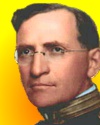
Died 17 Jan 1929 at age 54 (born 16 Jul 1874).
Joseph Goldberger was an Austrian-American epidemiologist who is best known for his work showing the connection between pellagra and a deficiency in the diet of poor people. Beginning in 1902, he investigated various diseases: yellow fever, typhoid fever, dengue fever, infections by trematodes (parasitic worms), typhus fever, and diphtheria. In 1914, the U.S. Surgeon General asked Dr. Goldberger to research the treatment of pellagra, the disease of the four D’s—dermatitis, diarrhea, dementia and, too often, death. Goldberger rejected the prevailing germ theory, and showed pellagra was not infectious. Instead, the disorder resulted from a poor corn-based diet, unless supplemented with yeast. After he died, it was Conrad A.Elevjhem who identified (1937) the missing nutrient was niacin, a B vitamin.«
Joseph Goldberger was an Austrian-American epidemiologist who is best known for his work showing the connection between pellagra and a deficiency in the diet of poor people. Beginning in 1902, he investigated various diseases: yellow fever, typhoid fever, dengue fever, infections by trematodes (parasitic worms), typhus fever, and diphtheria. In 1914, the U.S. Surgeon General asked Dr. Goldberger to research the treatment of pellagra, the disease of the four D’s—dermatitis, diarrhea, dementia and, too often, death. Goldberger rejected the prevailing germ theory, and showed pellagra was not infectious. Instead, the disorder resulted from a poor corn-based diet, unless supplemented with yeast. After he died, it was Conrad A.Elevjhem who identified (1937) the missing nutrient was niacin, a B vitamin.«
Goldberger on Pellagra, by Joseph Goldberger and Milton Terris (editor). - book suggestion.
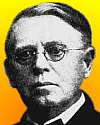
1921
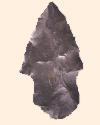
American museum curator who excavated Indian remains in Ohio, especially the Adena Mound (1901), a large earthen Indian burial ground near Chillicothe. Dating from about 50 BC, this site now represents the type site for the study of the North American Adena culture and period. Mills also made the definitive study (publ.1921) of Ohio's Flint Ridge “Great Indian Quarry” for the Ohio Archaeological and Historical Society of which he was curator and librarian 1898-1928.[Image right: point first described and named by Mills in his 1902 book Excavation of the Adena Mound recording points he found at the large mound on the Adena Estate of Governor Worthington in Ross County, Ohio.]
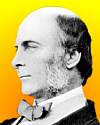
Died 17 Jan 1911 at age 88 (born 16 Feb 1822). quotes
English anthropologist, eugenicist and statistician who was an investigator of intellectual ability and the founder of eugenics. He explored in south-western Africa. In meteorology, he was first to recognise and name the anticyclone. He interpreted the theory of evolution of (his cousin) Charles Darwin to imply inheritance of talent could be manipulated. Galton had a long-term interest in eugenics - a word he coined for scientifically selected parenthood to enable inheritance of beneficial characteristics. He coined the phrase “nature versus nurture.” Galton experimentally verified the uniqueness of fingerprints, and suggested the first classification based on grouping the patterns into arches, loops, and whorls. On 1 Apr 1875, he published the first newspaper weather map, in The Times.«[Image: at age about 50]
English anthropologist, eugenicist and statistician who was an investigator of intellectual ability and the founder of eugenics. He explored in south-western Africa. In meteorology, he was first to recognise and name the anticyclone. He interpreted the theory of evolution of (his cousin) Charles Darwin to imply inheritance of talent could be manipulated. Galton had a long-term interest in eugenics - a word he coined for scientifically selected parenthood to enable inheritance of beneficial characteristics. He coined the phrase “nature versus nurture.” Galton experimentally verified the uniqueness of fingerprints, and suggested the first classification based on grouping the patterns into arches, loops, and whorls. On 1 Apr 1875, he published the first newspaper weather map, in The Times.«[Image: at age about 50]
A Life of Sir Francis Galton: From African Exploration to the Birth of Eugenics, by Nicholas Wright Gillham. - book suggestion.

Died 17 Jan 1910 at age 69 (born 14 Oct 1840). quotes
German physicist who investigated the properties of electrolytes (substances that conduct electricity in solutions by transfer of ions) and contributed to the understanding of their behaviour. Some of Kohlrausch's pioneering achievements include conductivity measurements on electrolytes, his work on the determination of basic magnetic and electrical quantities, and the enhancement of the associated measuring technologies. It was under his direction that the "Physikalisch-Technische Reichsanstalt" (the then Imperial Physical Technical Institute in Germany) created numerous standards and calibration standards which were also used internationally outside Germany.
German physicist who investigated the properties of electrolytes (substances that conduct electricity in solutions by transfer of ions) and contributed to the understanding of their behaviour. Some of Kohlrausch's pioneering achievements include conductivity measurements on electrolytes, his work on the determination of basic magnetic and electrical quantities, and the enhancement of the associated measuring technologies. It was under his direction that the "Physikalisch-Technische Reichsanstalt" (the then Imperial Physical Technical Institute in Germany) created numerous standards and calibration standards which were also used internationally outside Germany.
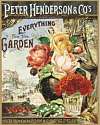
Died 17 Jan 1890 at age 67 (born 9 Jun 1822).
Scottish-American horticulturist known as the “Father of American Horticulture.” He learned methods of gardening in the Old World, then immigrated to the U.S. in 1843. He started market gardening in 1847 with a capital of $500.00. The publication Gardening for Profit (1868) was the first American book devoted entirely to market gardening and it encouraged many to enter the business. His seed business was started in 1865. Few men have done more to simplify the handling of plants for commercial use. His greenhouses were models for his many visitors and his methods were widely copied. He also wrote Practical Floriculture (1868) for commercial floriculture, and later, for the amateur audience, Gardening for Pleasure (1875).
Scottish-American horticulturist known as the “Father of American Horticulture.” He learned methods of gardening in the Old World, then immigrated to the U.S. in 1843. He started market gardening in 1847 with a capital of $500.00. The publication Gardening for Profit (1868) was the first American book devoted entirely to market gardening and it encouraged many to enter the business. His seed business was started in 1865. Few men have done more to simplify the handling of plants for commercial use. His greenhouses were models for his many visitors and his methods were widely copied. He also wrote Practical Floriculture (1868) for commercial floriculture, and later, for the amateur audience, Gardening for Pleasure (1875).
Henderson's Handbook Of Plants, by Peter Henderson. - book suggestion.
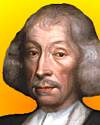
Died 17 Jan 1705 at age 77 (born 29 Nov 1627). quotes
English naturalist and botanist who was a leader in his field during the 17th-century English and contributed significantly to progress in taxonomy, and is often referred to as the father of natural history in Britain. He toured Europe with Francis Willoughby in search of specimens of flora and fauna. Ray was the first to classify flowering plants into monocotyledons and dicotyledons. Ray established the species as the basic taxonomic unit - his enduring legacy to botany. His major work was the three-volume Historia Plantarum (1686-1704). He also attempted to classify the animal kingdom. In 1693 he published a system based on a number of structural characters, including internal anatomy, which provided a more natural classification than those being produced by his contemporaries.
English naturalist and botanist who was a leader in his field during the 17th-century English and contributed significantly to progress in taxonomy, and is often referred to as the father of natural history in Britain. He toured Europe with Francis Willoughby in search of specimens of flora and fauna. Ray was the first to classify flowering plants into monocotyledons and dicotyledons. Ray established the species as the basic taxonomic unit - his enduring legacy to botany. His major work was the three-volume Historia Plantarum (1686-1704). He also attempted to classify the animal kingdom. In 1693 he published a system based on a number of structural characters, including internal anatomy, which provided a more natural classification than those being produced by his contemporaries.
John Ray: Naturalist: His Life and Works, by Charles E. Raven. - book suggestion.
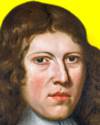
Died 17 Jan 1691 (baptized c. 29 Jan 1631).
English physician and physiologist who made the first direct transfusion of blood from one animal to the veins of another (in dogs, 1665). In the early 1660s, he had worked as the assistant of Thomas Willis in Oxford, and became famous for his anatomical work on the brain and nerves. The idea of injecting blood into a living animal, and of doing this not by syringe or bladder, but from one animal to another, was first mentioned by Lower in a Jun 1664 letter to Robert Boyle. In 1665, Lower experimented with dogs. Then in 1666, at the Royal Society, Lower performed (for the first time in England) a transfusion of blood into a human. Arthur Coga, a man described as an "eccentric scholar", was persuaded to receive a transfusion of sheep's blood. The experiment was deemed successful. One of the aims of this experiment had been to see what qualities might be transmitted through transfused blood. (The first ever human blood transfusion was done in Paris). Lower was one of the most skilled and accomplished vivisectionalists of his time. Later, he became the most celebrated physician in London for a while. He published his most important work, Tractatus de corde in 1669, his own anatomical and physiological investigation of the structure and action of the heart.DNB (1909) gives born in 1631 and also states 'Richard was baptised ... 29 Jan 1631-2.' DSB gives the same year of birth without further information.]
English physician and physiologist who made the first direct transfusion of blood from one animal to the veins of another (in dogs, 1665). In the early 1660s, he had worked as the assistant of Thomas Willis in Oxford, and became famous for his anatomical work on the brain and nerves. The idea of injecting blood into a living animal, and of doing this not by syringe or bladder, but from one animal to another, was first mentioned by Lower in a Jun 1664 letter to Robert Boyle. In 1665, Lower experimented with dogs. Then in 1666, at the Royal Society, Lower performed (for the first time in England) a transfusion of blood into a human. Arthur Coga, a man described as an "eccentric scholar", was persuaded to receive a transfusion of sheep's blood. The experiment was deemed successful. One of the aims of this experiment had been to see what qualities might be transmitted through transfused blood. (The first ever human blood transfusion was done in Paris). Lower was one of the most skilled and accomplished vivisectionalists of his time. Later, he became the most celebrated physician in London for a while. He published his most important work, Tractatus de corde in 1669, his own anatomical and physiological investigation of the structure and action of the heart.DNB (1909) gives born in 1631 and also states 'Richard was baptised ... 29 Jan 1631-2.' DSB gives the same year of birth without further information.]
In 1949, for the first time, full energy was released by the first synchrotron which was installed at the Radiation Laboratory, University of California, Berkeley. It was invented by Edwin Mattison of the same university, and would accelerate electrons by virtue of their negative charges, using a betatron-type magnet that weighed about 8 tons. The synchrotron was constructed at the General Electric Research Laboratory at Schnectady, N.Y. by Dr. Herbert C. Pollock and Willem F. Westendorp.
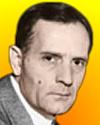
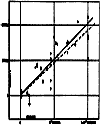
In 1928, the first U.S. patent for a fully automatic photographic film developing machine was issued to its inventor, Anatol M. Josepho. It was an apparatus for developing film strips. The first model of the Photomaton was constructed in a loft building on 125th Street, New York City. It is said the inventor received one million dollars for the invention. The first Photomaton studio was opened to the public at 1659 Broadway, New York City, in Sep 1926.
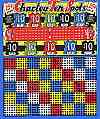
In 1905, the first U.S. patent was issued for a punchboard to Charles A. Brewer and Clinton G. Scannell of Chicago, Illinois, described as “vending devices.” They were manufactured by Charles A. Brewer & Sons in the same city. (No. 780,086). Even though the equivalent of punchboards had been around for many years, they had never been available in such a neat and portable form. The invention of board stuffing machines and ticket folding and plaiting machines in the late 1910s was probably the key factor which allowed the punchboard industry to flourish. Once the boards became cheap to manufacture, they flooded the country. Noted gambling author John Scarne estimates that 30 million punchboards were sold in 1910-15.
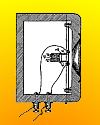
In 1882, Thomas A. Edison was issued a patent for an improvement to the telephone (No. 252,442). It described a carbon microphone. Finely divided conducting material, such as carbon, between metal cups mounted on arms is attached to the mouthpiece diaphragm. As sound waves directed through the mouthpiece move the diaphragm, the arms change the pressure on the carbon button which in turn varies an electric current passing through the carbon button. Changes in the current correspond to the pitch and amplitude of the sound. One arm conducts the electrical current to the carbon button, and the the other from it.
In 1882, a telephone switchboard was issued a U.S. patent to Leroy Firman of Chicago, Illinois (No. 252,576), which was assigned to the Western Electric Manufacturing Co. also of Chicago. With his invention of a “multiple switchboard for telephone exchanges,” Firman addressed the problem of increasing numbers of subscribers. Previously, single switchboards, each with an attendant, served their group of individual lines. A large exchange was thus divided up into a number of internal exchange switchboards which were worked together as necessary, with trunk lines between the boards. Firman devised an arrangement to handle an exchange of a thousand or more subscribers with line status information exchanged between switchmen.
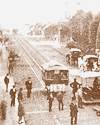
In 1871, a U.S. patent was issued for an “endless wire rope way” subsequently used for the first cable car to be put into service in the world for public transport (No.110,971). The invention by Andrew S. Hallidie began service in San Francisco on 1 Aug 1873 on Clay Street Hill. It ran from Kearny Street to the crest of the hill, a distance of 2,800 feet, making a rise of 307 feet, and moved by motor-driven cables under the city street. [An earlier cable car patent was issued for an “improvement in tracks for city railways,” being an underground tunnel having a series of pulleys inside housing the cable. That inventor, Eleazer A. Gardner of Philadelphia, Pa. received his patent (No. 19,736) on 23 Mar 1858.]
Cable Car Days in San Francisco, by Edgar Myron Kahn. - book suggestion.
